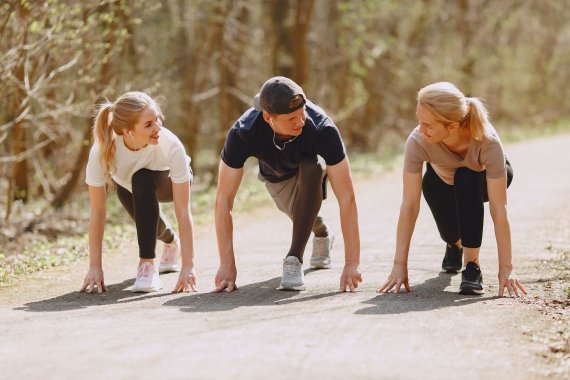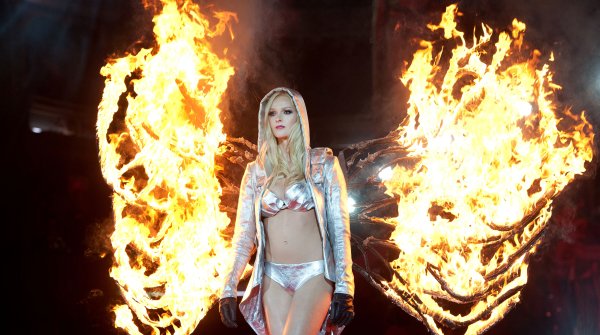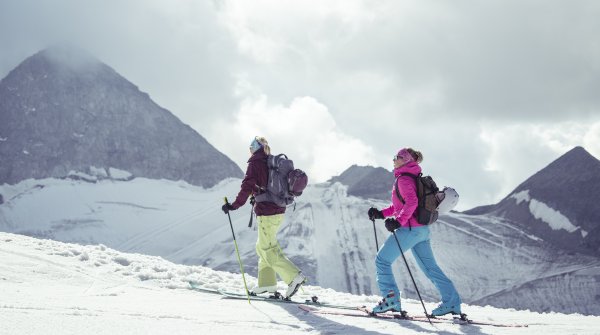
Just do it - easier said than done. Everyone is familiar with the annoying inner pig that has to be overcome time and time again. A claim like this alone is usually not very motivating; a group is much more effective. The keyword is extrinsic motivation, which in sports psychology means external motivation. And this has exploded in recent years thanks to social networks.
"The importance of movement and sport has increased tremendously in the last two years" (original: "We've seen a tremendous shift in the importance of movement and sport in people's lives"), says Michael Horvath, CEO and co-founder of tracking app Strava. In May 2022, the company announced a record 100 million registered members. Around the world, people use the app to record their fitness performance and share it with the community - on Strava itself, but also on other social networks. From the morning jog to Iron Man preparation, the technology can record every running and cycling workout and make sports routines visible. And of course also successes - for the athletes themselves, but also for many others.
It's not just Strava that has grown so much. Other digital sports communities are also popular: cyclists share performances and tours on platforms like Komoot, fitness challenges go viral on Instagram and TikTok, and the Metaverse is ideally prepared for virtual group sports. Community is also very important at ISPO. The ISPO Collaborators Club brings sports enthusiasts and brands together to shape the future of sports. What explains this hype? Is it the desire for a (digital) showdown, a profit-oriented comparison? No, anyone who immerses themselves in these sports communities quickly realizes that it's about something completely different. Here, a sorrow shared is a sorrow halved, and successes are even more enjoyable to celebrate together. That motivates!
Of course, the pandemic has also contributed to the boom in this development. Even if it is almost boring to cite it as a growth factor, it cannot be ignored. The recurring assessment of industry experts that the pandemic was a catalyst for the major megatrends in the sports industry, which had already become apparent, also seems to be confirmed in this case. After all, the idea of performance, the shift in values toward performance in all areas of life, was already there before Corona. And so were social networks. The difference is that the idea of competition has been replaced by a new sense of togetherness. A motivating bond.
How much this development benefits sports tech companies is obvious. But what about their own performance? Can it be increased through active participation in sports communities? The answer is yes! Numerous studies have examined this phenomenon and explained it with the so-called Köhler effect. It describes a motivational gain that arises in joint training or exchange.
Everyone knows this: in a crowded spinning class, you exert yourself much more than in a lonely workout at home - the performance of the others simply spurs you on. But this phenomenon doesn't just work when you're physically present in a group. Apparently, the feeling of belonging to a digital community triggers a similar effect. It is interesting to note that even very strong team members improve their performance through the feeling of belonging to a group.
A fascinating phenomenon that Peloton's Head of Marketing, Anke Drewike, also observes. In an interview with ISPO author Eva Doll, she talks about the extremely supportive member community, which, for example, sends each other digital high-fives during cycling courses to motivate each other - on the screen next to the real-time performance and rankings for all to see. And that support continues after, or before, the courses: on social media, Peloton members around the world arrange virtual group rides. "They give each other tips, motivate or advise undecideds. There's a strong sense of togetherness from training together virtually. The community is very open-minded and friendly," says Drewike, who credits the users with a large share of the brand's success.
Man is and remains a social being. If the last few years have taught us anything, it's how important interaction, exchange and a sense of belonging are. At first glance, the fact that trends in sports tend to favor individual sports - running, cycling, surfing, etc. - may seem contradictory. However, if you immerse yourself in the respective communities, you can immediately sense an enormous sense of cohesion.
Networking via digital apps, social networks or virtual course offerings can lead to community building just as much as soccer training on the pitch. And both worlds naturally intertwine. Because the trend toward collaborative training is also growing offline. From running groups to outdoor yoga classes - sports groups have long been part of the urban landscape in many cities and have a positive effect not only on the fitness of participants, but also on the fun factor of sports.
- ISPO awards
- Mountain sports
- Bike
- Design
- Retail
- Fitness
- Health
- ISPO Job Market
- ISPO Munich
- ISPO Shanghai
- Running
- Brands
- Sustainability
- Olympia
- OutDoor
- Promotion
- Sports Business
- ISPO Textrends
- Triathlon
- Water sports
- Winter sports
- eSports
- SportsTech
- OutDoor by ISPO
- Heroes
- Transformation
- Sport Fashion
- Urban Culture
- Challenges of a CEO
- Trade fairs
- Sports
- Find the Balance
- Product reviews
- Newsletter Exclusive Area
- Magazine







